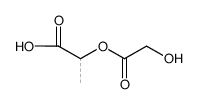Pediatric anophthalmic sockets and orbital implants: outcomes with polymer-coated implants.
Maria Kirzhner, Yevgeniy Shildkrot, Barrett G Haik, Ibrahim Qaddoumi, Carlos Rodriguez-Galindo, Matthew W Wilson
文献索引:Ophthalmology 120(6) , 1300-4, (2013)
全文:HTML全文
摘要
To compare wrapped and polymer-coated hydroxyapatite implants in children undergoing primary enucleation with no adjuvant therapies.Retrospective, interventional cohort study.All children undergoing primary enucleation without adjuvant therapies between 1999 and 2009 at a tertiary pediatric cancer hospital.Review and analysis of patient records.Implant exposure, extrusion and migration, socket contracture, and formation of pyogenic granuloma.Sixty consecutive patients undergoing primary enucleation with no adjuvant chemotherapy or radiation with follow-up of at least 12 months were included. Retinoblastoma was the diagnosis in 59 eyes (98.3%). Median follow-up was 3.6 years (range, 1.0-9.3 years). Two implant sizes were used: 20 mm in 47 patients (78.3%) and 18 mm in 13 patients (21.7%). Overall, 52 patients (86.7%) had an event-free recovery. Polymer-coated hydroxyapatite implants (43/60, 71.7%), when compared with wrapped ones (17/60, 28.3%), had a trend toward greater event-free recovery (odds ratio [OR], 1.6; 95% confidence interval [CI], 0.3-7.7) and lower exposure rate (OR, 2.1; 95% CI, 0.4-10.5).The use of polymer-coated hydroxyapatite implants is associated with favorable outcomes in the pediatric population. Despite observed complications, long-term implant retention is possible in most children.The author(s) have no proprietary or commercial interest in any materials discussed in this article.Copyright © 2013 American Academy of Ophthalmology. Published by Elsevier Inc. All rights reserved.
相关化合物
| 结构式 | 名称/CAS号 | 分子式 | 全部文献 |
|---|---|---|---|
 |
聚(D,L-乳酸-co-乙醇酸)
CAS:26780-50-7 |
C5H8O5 |
|
Simple measurements for prediction of drug release from poly...
2015-05-01 [Eur. J. Pharm. Biopharm. 92 , 1-7, (2015)] |
|
Induction of long-lasting protective immunity against Toxopl...
2013-01-01 [Parasit. Vectors 6 , 34, (2013)] |
|
Reduced postoperative chronic pain after tension-free inguin...
2014-01-01 [J. Am. Coll. Surg. 218(1) , 102-7, (2014)] |
|
Effect of water on exenatide acylation in poly(lactide-co-gl...
2013-09-15 [Int. J. Pharm. 454(1) , 344-53, (2013)] |
|
Local delivery of biodegradable pirfenidone nanoparticles am...
2012-12-21 [Nanotechnology 23(50) , 505101, (2012)] |